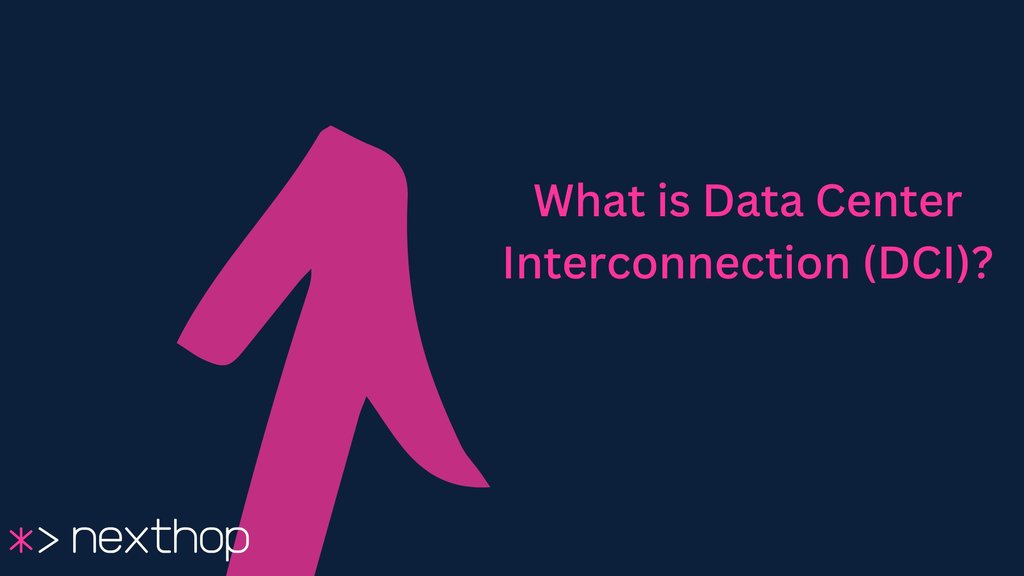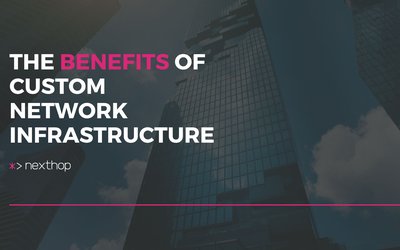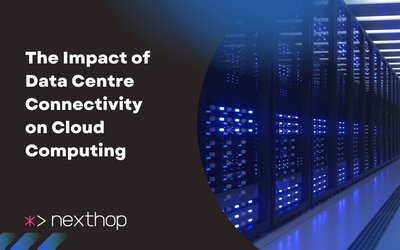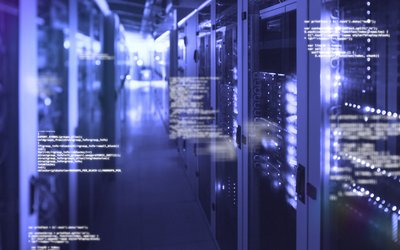Our blog
>
What is Data Center Interconnection (DCI)?
In today's digital world, data centers have become very important to most, if not all, businesses globally. These advanced structures provide the necessary IT infrastructure, which allows organizations to store, manage, and relay huge amounts of data. Owing to the rapid growth of data center services, building efficient and robust data center interconnection (DCI) is now a necessity. DCI technology is fundamentally designed to enhance the integration of multiple centers thus in turn boosting the connectivity of the communication networks, improves efficiency and increases security. The article also illustrates the DCI’s own complexities and its merits while providing its real world uses and ends with the how Nexthop can advance these attributes even further.
What is DCI?
Data center interconnection can be defined as the technology and methods utilized to link two or more data centers in a manner that allows them to share resources and information with ease. Connectivity can be implemented in short ranges (for example, within a city) or in large spans (such as broad areas within or outside regions- or even across continents). DCI technology selection is governed by many factors including distance, bandwidth requirements, and security issues.
Networks of data centers can allow businesses to:
- Improve the Capability of the Network: The DCI plays a crucial role in bringing down both latencies off the networks and enhancing the overall performance of the networks, making it possible to transfer data at higher rates and achieve shorter latency.
- Enhance the Availability of the Network: The presence of additional connections between two or more data center allows for greater buildup of network resiliency thus reducing the periods of downtime that would be experienced in the whole system; thereby safeguarding the operations of the enterprise.
- Integrate Better with Clouds: With DCI, customers can easily onboard to external cloud providers and implement hybrid as well as multi cloud models without any issues.
- Geography Excision: Interconnecting data centers means sharing infrastructure–a real risk as it opens presence to the long arms of the unregulated public internet.
To show practical uses of DCI we will present some real-life instances where DCI has been applied:
- Financial Services:
- High Frequency Trading: Due to the need for DCI, financial institutions have DCI interconnections between their trading platforms and several data centers allowing for near instantaneous trading that keeps the market impact costs low.
- Disaster Recovery: Secondary data centers come into play with the help of DCI for the rapid switch over in the event of failover of the primary site ensuring resilience and limiting loss of revenue.
- ECommerce:
- Transcontinental – Connected Distribution Systems: Internet selling companies rely on DCI to span their interconnected data centers all over the globe thus enhancing the delivery of content and decreasing the loading times on websites.
- Inventory Management: Inventory levels in different storages can be automatically updated with the help of DCI, without the need to move the products thus enhancing customer orders processing level.
- Healthcare:
- e-Health: DCI allows the between and within health care institutions the transfer of medical pictures and information of their clients quite easily in a safe manner during consultations between doctors and their patients improving the health of patients who do not have to travel a lot to obtain healthcare.
- Electronic Health Records (EHR): DCI offers secure and optimised transfer of EHR records between healthcare facilities.
Experience the Power of Nexthop`s Agile and Reliable Telecommunication Solutions
Contact Us Today and Future Proof Your Business Connectivity
Sydney
/
Melbourne
/
Brisbane
/
Perth
Key Components of DCI
Network Infrastructure
The network infrastructure, which includes routers, switches, and cabling for data transfer, forms the core of any DCI solution. Most times, high-capacity fibre optic cables are used instead, as they can carry a lot of data even over long distances while keeping latencies lower. For instance, a video on demand type streaming service can hook up its data centers with DWDM technology to provide content to millions of users at once without problems.
Carrier Neutral Data Centers
Carrier neutral data centers are important in DCI because they enable interconnection of telecommunications carriers within one building. This means the companies can select the best providers with the best connectivity without being restricted to one provider, to have easy access to multiple ISPs and enhance its overall network performance while minimizing costs.
Interconnection Points
Interconnection points refer to geographical locations that are used for interconnecting and switching of different networks. These places are imperative to the movement of traffic to and from data centers.
Cross Connects
Cross connects are connections within the data center through physical cabling of different networks.
Network Protocols
DCI solutions usually incorporate many types of network protocols such as Multiprotocol Label Switching (MPLS).
Benefits of Data Center Interconnection
Improved Performance and Scalability
DCI's most beneficial feature is perhaps the enhancement of networks by offering high reach interconnections which help reduce latency. Resources can be utilized more efficiently by load balancing over several data centers. For instance, e-commerce businesses can load balance inbound traffic across several presences in different geographies making it possible to serve customers quicker in busy shopping periods.
Enhanced Business Continuity and Disaster Recovery
DCI improves the safety of networks by making it possible for data centers to connect directly and securing the links with encryption and other security equipment. For instance, a government might utilize private optical fibre cables within its buildings for the communication of sensitive information to prevent all classified data transmission from being intercepted while in transit.
Increased Flexibility and Cost-Effectiveness
Whereas DCI promotes the efficient utilization of resources in a geographical span at different locations leading to minimized use of redundant infrastructure and the reduction of costs incurred in operations as a whole. Following this, a logistic provider can take advantage of DCI by effectively geographical distribution of data processing activities performed to minimize the number of sited utilized, while still remaining highly available and performing.
Choosing the Right DCI Solution
Assessing Your Business Needs
Organizations must first assess their specific data transfer requirements, latency needs, and security considerations. Factors such as the distance between data centers, the amount of data to be transferred, and the desired level of security will influence the choice of DCI solution.
Evaluating DCI Providers
In choosing a DCI provider, a company has to look at aspects such as the performance of the network, security measures, available options for scalability, and after sales services. A provider who offers similar services and has been in operation for some time is highly recommended.
To sum up, the data center interconnection (DCI) has become one of the prominent technologies that enable the growth of digital economies. Organizations are able to perform better network connectivity through DCI, and that helps them better manage network availability as well as offer more alternatives. Some of the advantages of DCI connection are lessened latency, greater bandwidth, and enhanced safety. Data center facilities are in high demand, and the growth of scientific networks is also promoting developments in DCI. Technologies like SDN and NFV can be used to maximize DCI solutions of the organizations. Nexthop is a network solution provider that has integrated DCI in its extensive list of solutions for the benefit of corporates.





